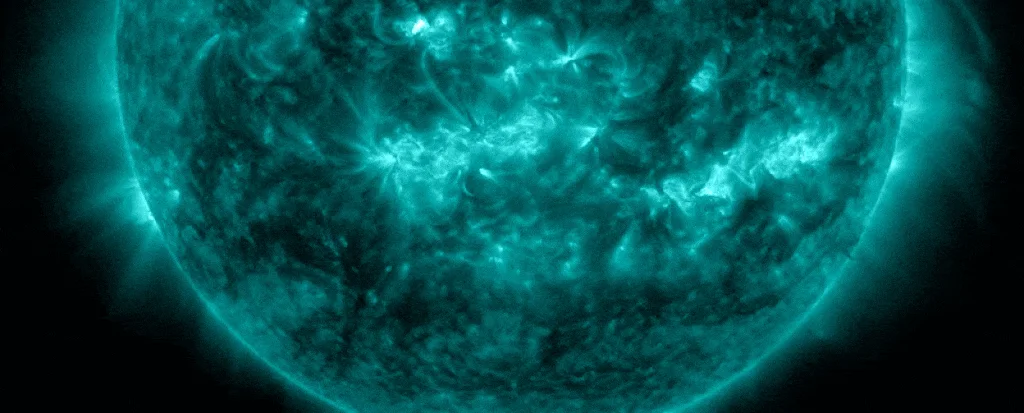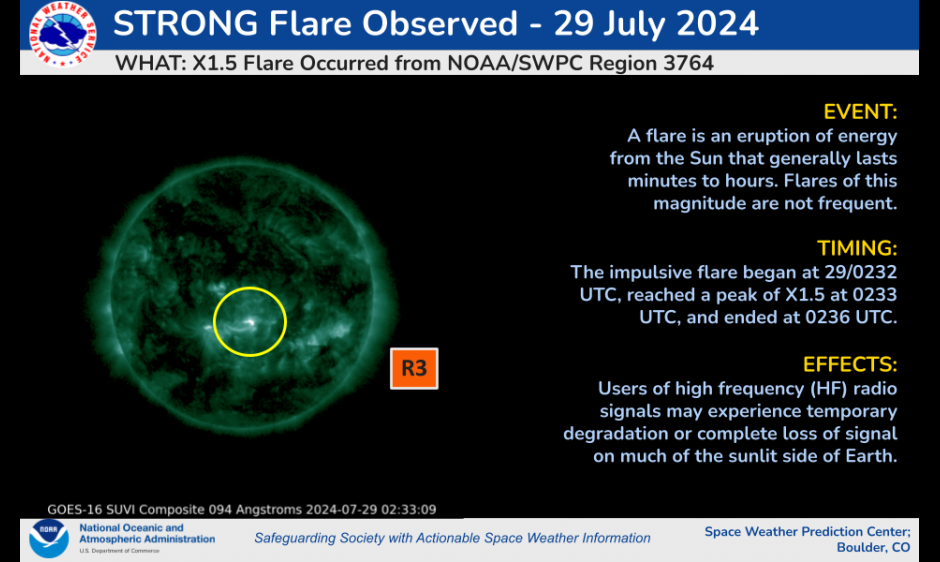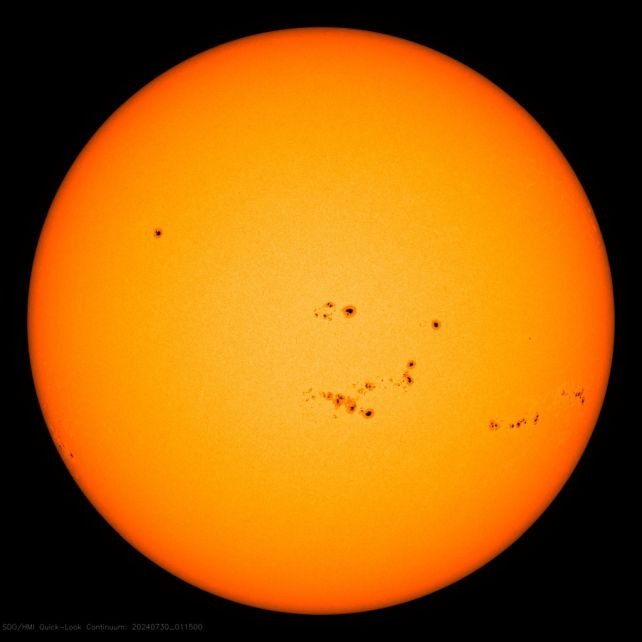The Sun has flared repeatedly in recent days, releasing several coronal mass ejections (CMEs) and solar flares toward Earth. These emissions will soon reach our planet, and the next few nights are predicted to play out with dancing auroras.

Sunspot clusters on the solar equator spinning past Earth, spewing fire and fury, caused six M-class flares and one X-class flare in the past 24 hours. These bright flares of light on the Sun’s surface are accompanied by emissions of X-rays and ultraviolet radiation that can cause brief communications blackouts on Earth. Class X flares are the most powerful, while Class M flares are slightly less intense.
The Sun also ejects huge volumes of solar plasma entangled in magnetic fields that propagate through the solar System. These are CMEs, sometimes accompanied by flares. Both phenomena are closely related to sunspot regions, where the magnetic field becomes entangled, breaks apart and reconnects, releasing huge bursts of energy.

When CMEs hit the Earth’s magnetosphere, this activity can cause geomagnetic storms. This causes significant disturbances in the magnetic field, upper atmosphere, and plasma environment. One consequence is auroras: particles from the CME and solar wind interact with the Earth’s magnetic field, creating bright glows of different colors in the upper atmosphere.
This year we have seen the most powerful geomagnetic storms in decades, classified as “extreme” on the G5 scale. The predicted storms will not be as powerful, but they are still expected to be impressively strong, with some reaching the G3 (“severe”) level. This is due to the CME-canibal phenomenon, where two CMEs appear in rapid succession and the second “absorbs” the first, creating one huge wave of solar material.

The brightest aurora borealis is expected on July 30 and can be seen in the Northern Hemisphere: from Canada and the northern regions of the United States, as well as in Scotland, Norway and Sweden. In the Southern Hemisphere, it will be visible in the southernmost parts of mainland Australia and most of the South Island of New Zealand.
Solar activity is at its peak and the likelihood of further events remains high. So get outdoors and enjoy the spectacle.
Earlier we reported on how an astrophotographer captured a huge prominence.
According to sciencealert.com


